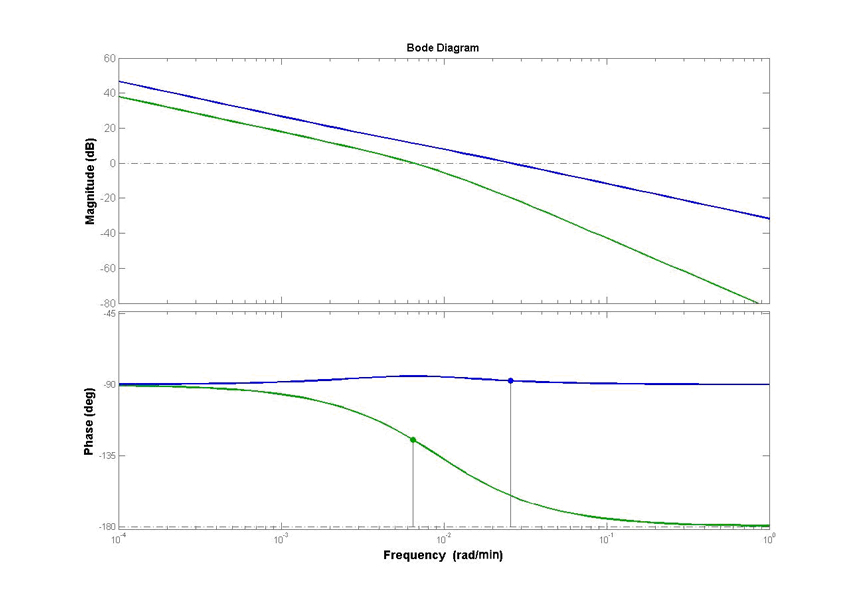Team:IIT Bombay India/CAM
From 2009.igem.org
Pranayiitb (Talk | contribs) |
Pranayiitb (Talk | contribs) |
||
| Line 91: | Line 91: | ||
[[Image:shetty2.jpg]] | [[Image:shetty2.jpg]] | ||
| - | '' | + | |
| - | Fig: Magnitude, phase and sensitivity bode plots for LacI system given in linear model. The green line represents CFS with only C1(s), while blue line represents DFS with both C1(s) and C2(s). The gain margin for both CFS and DFS is ∞. The phase margin is 92.2 degree for DFS and 56o for CFS. The increased bandwidth from 0.00428 rad/min to 0.0255 rad/min indicates faster response and improved noise rejection. The CFS has higher peak of 2.92 dB while DFS has no peak, again indicating better noise-attentuation. | + | ''Fig: Magnitude, phase and sensitivity bode plots for LacI system given in linear model. The green line represents CFS with only C1(s), while blue line represents DFS with both C1(s) and C2(s). The gain margin for both CFS and DFS is ∞.'' The phase margin is 92.2 degree for DFS and 56o for CFS. The increased bandwidth from 0.00428 rad/min to 0.0255 rad/min indicates faster response and improved noise rejection. The CFS has higher peak of 2.92 dB while DFS has no peak, again indicating better noise-attentuation. |
Revision as of 20:54, 21 October 2009
| Home | The Team | The Project | Analysis | Modeling | Notebook | Safety |
|---|
Control Theory Approach to Study Multiple Feedbacks in Lac-operon system |
| Control Analysis Model
1. Characterize the system. 2. Linearize the system around a set-point on LacI. 3. Obtain a linear model in transfer-function (s) domain. 4. Frequency response analysis using magnitude and phase bode plots. 5. Sensitivity analysis using magnitude bode plot for sensitivity function. 6. Steps 2-5 for 1000μM IPTG. 7. Add external noise in the system and tried to determine the reduction in the noise for the system with multiple feedbacks and open-loop system.
We have 2 control levels. By combination, we have 4 different control loops or structures possible, expressed in 4 different strains. They are as follows:- Strain 1 (Open loop) with plasmid (BBa_K255004) It has got open loop without any feedback.re there is constitutive expression of LacI.
It has got a single negative feedback loop. So the expression of LacI is under regulation. Here also the copy number of the plasmid is fixed.
It has got a single negative feedback loop on the feedback copy number. Here there is no control on the LacI expression.
It has dual negative feedback loop one on the plasmid copy number and second on the LacI expression.
The linearized system in transfer-function (s) domain is as given below:
The magnitude and phase bode plots for the system is given below:
2. The bandwidth increases from 0.00428 rad/min to 0.0255 rad/min for CFS to DFS. For system with IPTG concentration of 1000μM,
|
 "
"


